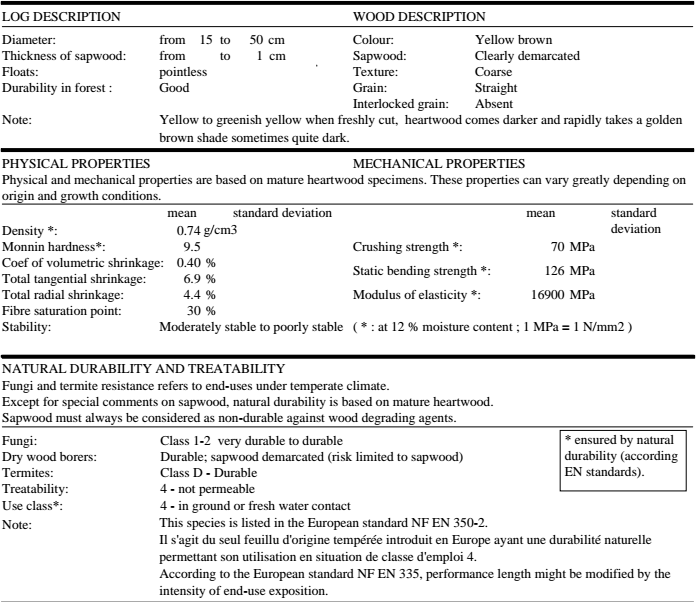Robinia (Black Locust)
Basic Information:
Black Locust, otherwise known by its botanical name Robinia Pseudoacacia, is a hardwood tree native to the South Eastern United States. Today it’s one of the most commonly cultivated trees in the world, grown all over the temperate regions of North America, Europe, and North Africa.Its extraordinary hardness and natural chemical composition make it capable of lasting 80 years underground. Because of its durability and resistance to rot and insects it found early use in small watercraft and fence construction.
Over the last 30 years Black Locust has become among the most common materials in the construction of natural and custom playgrounds because it offers the unique tactile play experience of wood many of the the typical durability concerns. All of this, along side it’s beautiful and natural curves make it our exclusive choice for any play components that come into contact with the earth.
Technical Information:
Black Locust FAQ:
Q: How vulnerable is it to vandalism?
A: Not very. Because of the density and weight of Robinia is notoriously difficult to damage structurally. Sanding is an easy fix for spray paint or other markers, and because it’s so dense and holds it’s moisture it’s unlikely to catch fire easily. When compared to the traditional options Robinia playgrounds are arguably more resilient to vandals. For proof, take a look at our Vandalism Field Test video.
Q: How is Robinia processed, is it treated?
A: No, the black locust used in our playgrounds does not receive any chemical treatment. The only processing Robinia undergoes is hand peeling and sanding.
Q: Does black locust require regular maintenance?
A: No, regular ongoing maintenance is not required. That said, Robinia is not a straight grain wood and tends to warp while drying. In some cases the wood will check so should be inspected periodically.
Q: Where do you source your Robinia?
A: Our Robinia is harvested in Upstate New York and Southern Ontario.
Q: What else is black locust used for today?
A: Over the last several years Black Locust has become a very popular material in progressive Landscape Architecture and engineering circles. For more information on this please refer to the American Society of Landscape Architecture’s newsletter article titled “Why Use Ipe When You Can Have Black Locust“.

